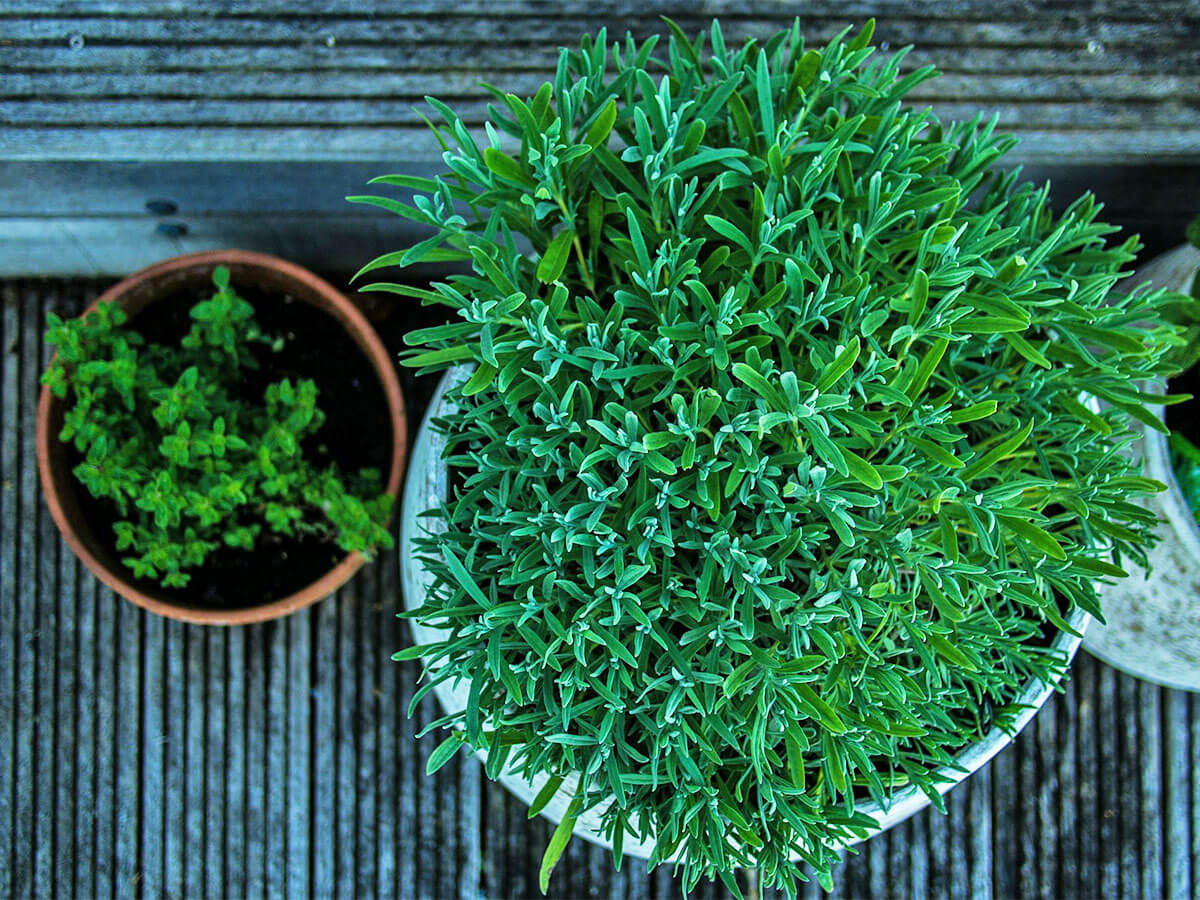How to Protect Your Container Plants from Frost
August, 2024 |Container plants are a beloved staple in small gardens, bringing vibrant color and life to patios, balconies, and compact outdoor spaces. After all, container growing is one of the most popular gardening methods for small spaces.
However, when the temperatures start to drop, these potted beauties are at a greater risk of frost damage compared to their in-ground counterparts.
A sudden drop in temperature can cause serious damage to your container plants, and in some cases, even kill them. So If you have some container perennials that you’d like to grow back next year… these tips are for you!
Why are container plants more vulnerable to frost?
Container plants are more susceptible to frost damage because their roots are above ground, making them more exposed to cold temperatures.
Unlike plants in the ground, which benefit from the earth’s natural insulation, container plants lack this protection, causing the soil to freeze more quickly.
The smaller volume of soil in containers also means that pots can lose heat faster, putting the plants at greater risk of root damage when the temperatures plummet.
Disclaimer: This post contains affiliate links. When you make a purchase through one of these links I may earn a commission. This comes at no extra cost to you.
Don’t Let Frost Kill Your Container Plants! 5 Essential Tips to Save Them
Winter can be a tough time for container plants. But don’t worry — there are some simple and effective steps you can take to keep your plants safe and healthy throughout the colder months.
Here are five essential tips to help you protect your container plants from damaging frosts.
1. Choose the Right Containers
Clay and terracotta pots are more porous and susceptible to frost damage because they can crack or break when exposed to freezing temperatures. Thin plastic containers can also become brittle and may not offer much protection against the cold.
Glazed ceramic pots can offer a bit of extra protection. But ideally, if you live in an area with harsh winters, frost-proof containers, like those made from thick plastic, wood, or fiberglass, are more durable and better at insulating roots during winter months.
If you’re now realising your beautiful new terracotta pots may not have been the best choice if you live in a frost-risk area… don’t worry! You can still protect your pots and plants from frost with all the useful tips below.

2. Move Containers Indoors or to Sheltered Areas
The easiest way to protect your container plants from frost is to bring them indoors or move them to a more sheltered location. A garage, enclosed porch, or even a sunny spot inside your home can provide the protection they need.
If you’re short on indoor space, consider grouping your plants close to the house or apartment wall. The warmth from the building can help shield them from the harshest frosts.
Just be aware that some plants (like fruit trees) need a period of cold weather to be able to fruit next year. Some plants will also still need sunlight. So do some research before putting your plants in a dark basement or putting a dwarf apple tree inside your warm home.
3. Use Frost Cloths or Garden Fleece
When frost is on the way, covering your container plants and the pots themselves is a simple yet effective method to keep them safe.
Insulating the container
Insulating your pots can help to protect the roots of your plants. Wrap the containers with bubble wrap, burlap, or old towels to help keep the roots warm. This is particularly important for clay or ceramic pots, which are more susceptible to cracking in freezing temperatures.
The insulating material will not only protect the pots themselves but also help maintain a more stable soil temperature.
Covering the plants themselves
Covering your plants with frost cloths, garden fleece, or even old blankets can provide an extra layer of insulation to protect them from the cold.
This frost-proof bag for pots on Amazon could be a great choice. Or alternatively, you could cover the plant itself using these Burlap Winter Plant Cover Bags from Amazon.
Be sure to cover the plants in the evening and remove the covers during the day to allow them to soak up the sunlight and get proper air circulation. This daily routine can make all the difference in keeping your plants healthy.

4. Elevate Containers Off the Ground
Cold ground temperatures on your patio etc, can seep into your containers and freeze the soil, potentially damaging the roots. To prevent this, elevate your pots by placing them on bricks, wooden planks, plant stands, or other sturdy supports.
These metal plant stands from Amazon are sturdy and work well for small to medium-sized planters.
Raising your containers off the cold ground helps improve drainage and keeps the soil warmer, which is crucial for your plants’ survival during frosty nights.

5. Water Plants Before a Frost
Believe it or not, watering your plants before a frost can actually help protect them. Moist soil retains heat better than dry soil, so giving your container plants a good drink before the temperature drops can keep the roots warmer and reduce the risk of freezing.
However, be careful not to overwater, as soggy soil can lead to root rot. The goal is to keep the soil moist, not waterlogged.

By following these five tips, you can help ensure that your container plants make it through the winter unscathed. With a little extra care, your plants will be ready to thrive again when the warmer weather returns.
Some perennials may bounce back. For example, one year I forgot to move my agapanthus (in a big terracotta container!) close to the house before a big freeze hit. The leaves wilted and never recovered, but the following Spring new shoots started appearing and it still sent up one flower stalk!
But try not to let the frost catch you off guard — start preparing your container garden for winter today!
You may also like to read…
Wondering what else you can do with your small outdoor space this winter? I’ve pulled together some of our posts to inspire you!
Garden jobs and planning…
- 11 Must-Do Winter Tasks for A Small Garden
- Don’t Let Your Compost Freeze! How to Keep It Alive In Winter
- 8 Winter DIY Projects for Small Spaces
- How to Plan Your Small Urban Garden for Spring During Winter
Winter planting ideas…





